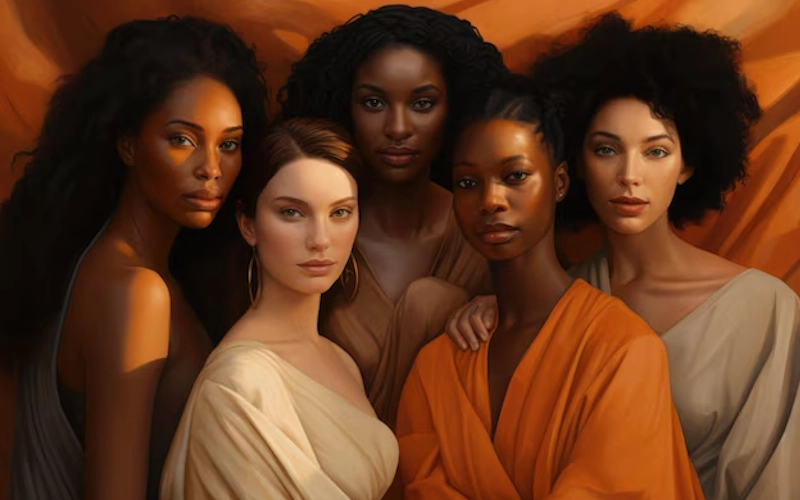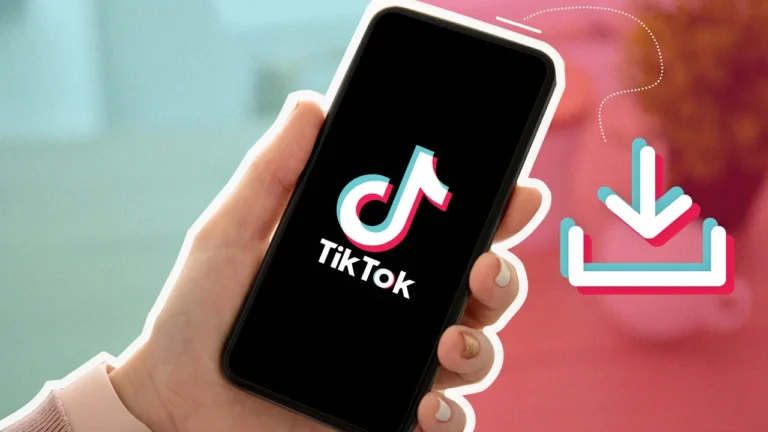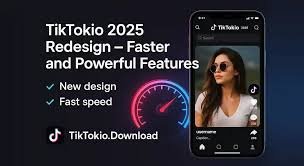
Introduction
The rise of digital media has brought with it a variety of niche platforms, trends, and cultural movements that influence everything from how we communicate to how we dress. Among these, the terms BaddiesHub and Baddie Hub have become increasingly prominent. Although they sound similar, they are quite different in nature and purpose.
This article offers a deep, thoughtful, and professional look at both BaddiesHub and Baddie Hub. One serves as a hub for curated content, often sourced from influencers and online personalities; the other operates as a fashion-forward brand representing the “baddie” aesthetic—a trend that has shaped Gen Z and millennial culture. In this comprehensive guide, we explore their origins, roles in digital society, marketing strategies, ethical considerations, and what their existence means for the future of digital content and fashion branding.
Defining the “Baddie” Aesthetic
To understand either of these platforms, one must first grasp the cultural foundation they stem from: the “baddie” aesthetic. Popularized by influencers on platforms like Instagram, TikTok, and YouTube, the baddie look emphasizes confidence, style, self-presentation, and body positivity. It is a blend of urban chic, glamor, and attitude.
This look often includes:
- Immaculate makeup and contouring
- Streetwear-inspired fashion
- Designer accessories or their look-alikes
- Influencer-style photoshoots and content
- Hashtags and community engagement
From Kylie Jenner to micro-influencers across platforms, the baddie trend has become more than a style—it is a lifestyle that fuels marketing, content creation, and digital identity.

Part I: BaddiesHub – A Digital Content Aggregator
Origins and Purpose
BaddiesHub positions itself as a curated media aggregator for content focused on influencers. It is not a social network or original content creator, but rather a collection point for various images and videos that have been sourced or reposted from other platforms.
This type of platform thrives on the concept of centralization. Instead of scrolling through Instagram, Twitter, or other media sites, users can find a selection of high-appeal content in one location. The value it offers is convenience—serving users content that they might otherwise miss, without requiring them to manage multiple social accounts.
Features and Offerings
While specifics vary by version, the typical features of BaddiesHub include:
- Access to influencer-style images and media
- Occasional premium or paywalled content
- Categorization by creator, genre, or format
- Anonymity in browsing
These attributes appeal to users who want easy access to curated content without the clutter of traditional social platforms.
Audience Demographics
The primary audience for BaddiesHub includes young adults, mostly male, who are active on digital platforms but prefer passive content consumption. Unlike Instagram or TikTok, where user engagement is reciprocal (likes, comments, messages), BaddiesHub is more voyeuristic in nature.
Part II: Baddie Hub – A Fashion and Lifestyle Brand
Origins and Evolution
Baddie Hub is a fashion brand that emerged from the digital aesthetic of baddie culture. It represents the commercialization of a style that once was organic and community-driven. Capitalizing on social media trends, the brand now offers products and collections that allow everyday consumers to emulate their favorite influencers.
Baddie Hub is not merely a clothing brand. It embodies a movement of self-expression, empowerment, and curated identity. The company collaborates with influencers, manages e-commerce stores, and utilizes direct-to-consumer marketing strategies to engage with its target audience.
Product Lines and Design Philosophy
The collections offered by Baddie Hub often include:
- Two-piece sets with bold colors
- High-waisted leggings and crop tops
- Streetwear-inspired oversized hoodies and joggers
- Bodycon dresses and figure-enhancing silhouettes
- Statement accessories like hoops, sunglasses, and designer-inspired bags
Designs often reflect the latest TikTok or Instagram trends, using fast fashion models to rapidly release new styles. This responsiveness to trends is key to the brand’s continued relevance.
Marketing and Branding
Baddie Hub uses a multi-tiered marketing strategy:
- Collaborations with influencers for product placements
- Social proof through user-generated content
- High-quality visuals and fashion shoots
- Seasonal lookbooks promoted via digital ads
Branding is consistent across platforms, with emphasis on confidence, exclusivity, and individuality.
Comparative Analysis: BaddiesHub vs Baddie Hub
| Category | BaddiesHub | Baddie Hub |
|---|---|---|
| Type | Content aggregator | Fashion & lifestyle brand |
| Focus | Influencer media curation | Clothing, accessories, aesthetic |
| Origin | Unofficial, community-generated | Corporate/influencer collaboration |
| Legal structure | Often unregulated or anonymous | Registered business entity |
| Ethical issues | Content ownership & privacy | Fast fashion & sustainability |
| Revenue model | Ads, premium content | Product sales, collaborations |
| Community engagement | Passive consumption | Active customer participation |
Ethical Considerations
BaddiesHub
BaddiesHub operates in a legal gray area. Much of the content it features is likely reposted without explicit permission from creators. This raises questions about:
- Digital consent: Are users aware their content is being distributed?
- Copyright infringement: Is the content monetized illegally?
- Privacy violations: Does it host sensitive or personal material without approval?
These concerns cast a shadow over the platform. Although some users may enjoy the content, others argue that it undermines digital ethics and intellectual property rights.
Baddie Hub
While Baddie Hub is legally structured and largely compliant with business laws, it faces scrutiny from sustainability advocates. Common criticisms include:
- Reliance on fast fashion models that contribute to waste
- Potential exploitation in overseas manufacturing
- Encouragement of excessive consumerism
However, the brand has opportunities to address these concerns through:
- Sustainable packaging
- Limited-run collections
- Ethical supplier auditing
Cultural Influence and Impact
The influence of both BaddiesHub and Baddies Hub extends far beyond their immediate offerings. They are reflections of broader cultural trends:
- The power of digital aesthetics
- The commodification of online identity
- Youth-driven trend cycles
- The dominance of influencer marketing
Both platforms signal a shift in how modern consumers interact with media, fashion, and technology. The audience is no longer passive; they are co-creators, co-distributors, and in many cases, co-branders.
Baddie Hub, in particular, plays into the aspirational economy. Users buy clothes not only to wear them but to transform themselves digitally—to post, to brand, to influence.
The Rise of Influencer-Driven Commerce
Brands like Baddie Hub thrive on the influencer economy. Unlike traditional celebrities, influencers feel relatable. When an influencer wears a Baddie Hub outfit, followers trust it more than a billboard ad. This leads to:
- Increased conversions through affiliate links
- Greater community participation
- User-generated marketing content
BaddiesHub, while not selling products directly, monetizes interest in influencer culture. Its model reflects an ecosystem where attention is currency.
Future Outlook
For BaddiesHub
Legal challenges could limit the platform’s long-term viability. As regulations around privacy and content ownership tighten, platforms like BaddiesHub may be forced to:
- Shut down or rebrand
- Transition into legal content curation
- Offer opt-in systems for creators
User behavior will also influence outcomes. The more people value consent and transparency, the less sustainable BaddiesHub’s current model becomes.
For Baddie Hub
The future is promising, especially if the brand:
- Embraces sustainability
- Explores physical retail pop-ups
- Launches AR try-on experiences
- Partners with diverse influencers
Their advantage lies in their adaptability and strong cultural relevance. As long as they remain tuned into social trends and youth values, they can continue to grow.
Conclusion
BaddiesHub and Baddies Hub may share similar names, but they serve fundamentally different purposes in the digital ecosystem. BaddiesHub reflects the complicated realities of content curation and digital consent, while Baddie Hub represents the commercialization of self-image and trend-based fashion.
Both thrive in an era defined by short attention spans, visual storytelling, and influencer authority. But their futures will depend on how well they navigate issues of legality, ethics, and community expectations.
As consumers, it’s essential to recognize these distinctions and engage with platforms in informed, thoughtful ways. While style, speed, and convenience matter, so do transparency, respect, and accountability.
Understanding BaddiesHub and Baddie Hub isn’t just about naming clarity—it’s about being aware of the forces shaping modern digital culture.





